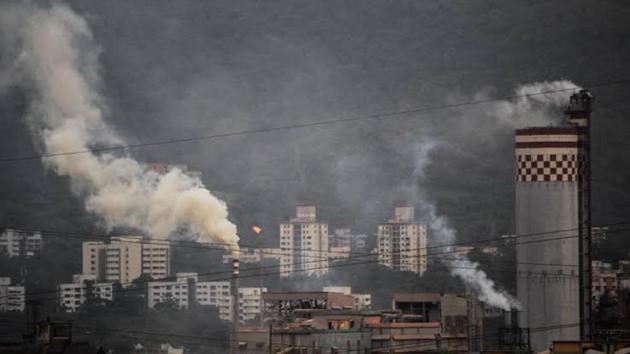Mumbai needs to walk an extra mile to curb air pollution
Mumbai has had a lackadaisical attitude towards air pollution, believing that sea breezes will sweep away the murk, but the CSE study has shown that the city needs more than the sea to clean up its air.
A study released by the Centre for Science and Environment (CSE) on Friday said that Mumbai’s air has the highest concentration of PM10 - a particulate matter of size 10 microns – among 24 cities in peninsular India.

The study stated that Mumbai had PM10 concentrations of 166 microgrammes per cubic metre (µg/m3) in its air, two times the safe standard of 83 µg/m3 for its climatic zone – warm and humid, and close to three times the safe standard of 60 µg/m3. PM is a mixture of dust, soot, chemicals, pollen and other particles that remain suspended in the air, more so in winter when cold air traps the deadly cocktail close to the ground. PM can enter the respiratory system and cause or aggravate ailments.
Another study has said that Mumbai has seen an 80% increase in the concentration of PM10 between 2007 and 2018, making it the most polluted of the country’s three major coastal cities (Mumbai, Kolkata, and Chennai). PM10 levels in 2018 were also the highest in 20 years.
Mumbai has had a lackadaisical attitude towards air pollution, believing that sea breezes will sweep away the murk, but the CSE study has shown that the city needs more than the sea to clean up its air. Despite the alarming statistics, Mumbai has no plan in place to tackle air pollution. The Central Pollution Control Board (CPCB) had rejected pollution mitigation plans prepared by the state pollution body for the city, calling them inadequate. After the Maharashtra government was asked to revise the plan, environmentalists and citizens suggested that the plan should focus on pollution sources like industry, transport, construction and garbage burning.
The plan was recently accepted after the Maharashtra Pollution Control Board (MPCB) revised plans to tackle vehicular and industrial pollution, including ideas like green buffer zones around commercial and industrial zones, more focus on solar energy and promoting less-polluting fuel for transport.
An important finding in the CSE study was the problem of open burning. A study by the National Environment Engineering Research Institute (NEERI) says that open burning contributes to 30% of PM10 in Mumbai. Bakeries that use wood and charcoal are responsible for 16% of PM10 emissions. PM is just one of the hazardous byproducts of open burning; the process releases lead, mercury and dioxins – compounds that can be passed along the food chain – into the air.
The CSE study estimated that between 2016 and November 2019, there were 589 fire incidents in Mumbai and several times that in the city’s neighbourhood – 8,750 in Thane and 13,810 in Raigad. Many of the fires are at the garbage dumps, like the five-day-long fire at the Deonar garbage dump in January 2016 that caused the city’s air quality to plummet to levels classified as ‘very poor’ by pollution monitoring agencies. But garbage is burnt without any regulation at other sites, including railway yards that do not have facilities to process their trash. Waste recyclers, in Dharavi, Kurla, Mahim and other localities, burn wastes to extract metals, releasing a toxic cocktail into the air. Garden waste is burnt when it can be composted.
The state government’s response to the pollution emergency has been half-hearted. Recently the Maharashtra Pollution Control Board (MPCB) appointed a consultancy group to do two studies to understand whether introducing electric bikes and flexible working hours may reduce traffic congestion and air pollution. The plan has been criticised by environmentalists who have said that instead of electric bikes, which will have a negligible impact on air quality, the government should look at regulating bigger sources of pollution like construction, automobiles and industry.
Current targets to reduce pollution under the National Clean Air Program (NCAP) are inadequate, experts have said. While the NCAP has a target to reduce PM by 20-30% by 2024 Mumbai needs to stretch its goal to 60% if it is to meet safe standards.




